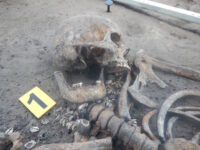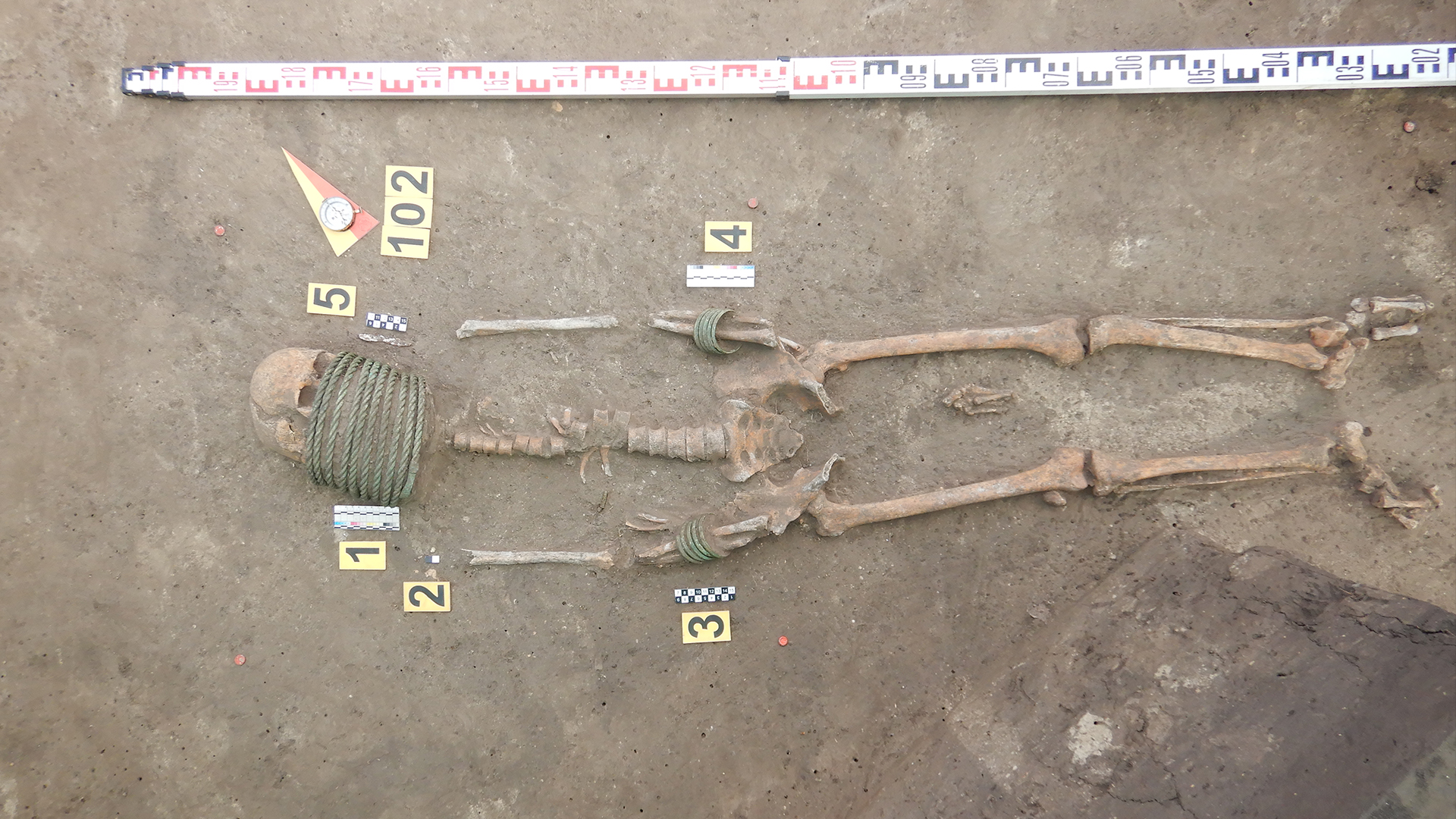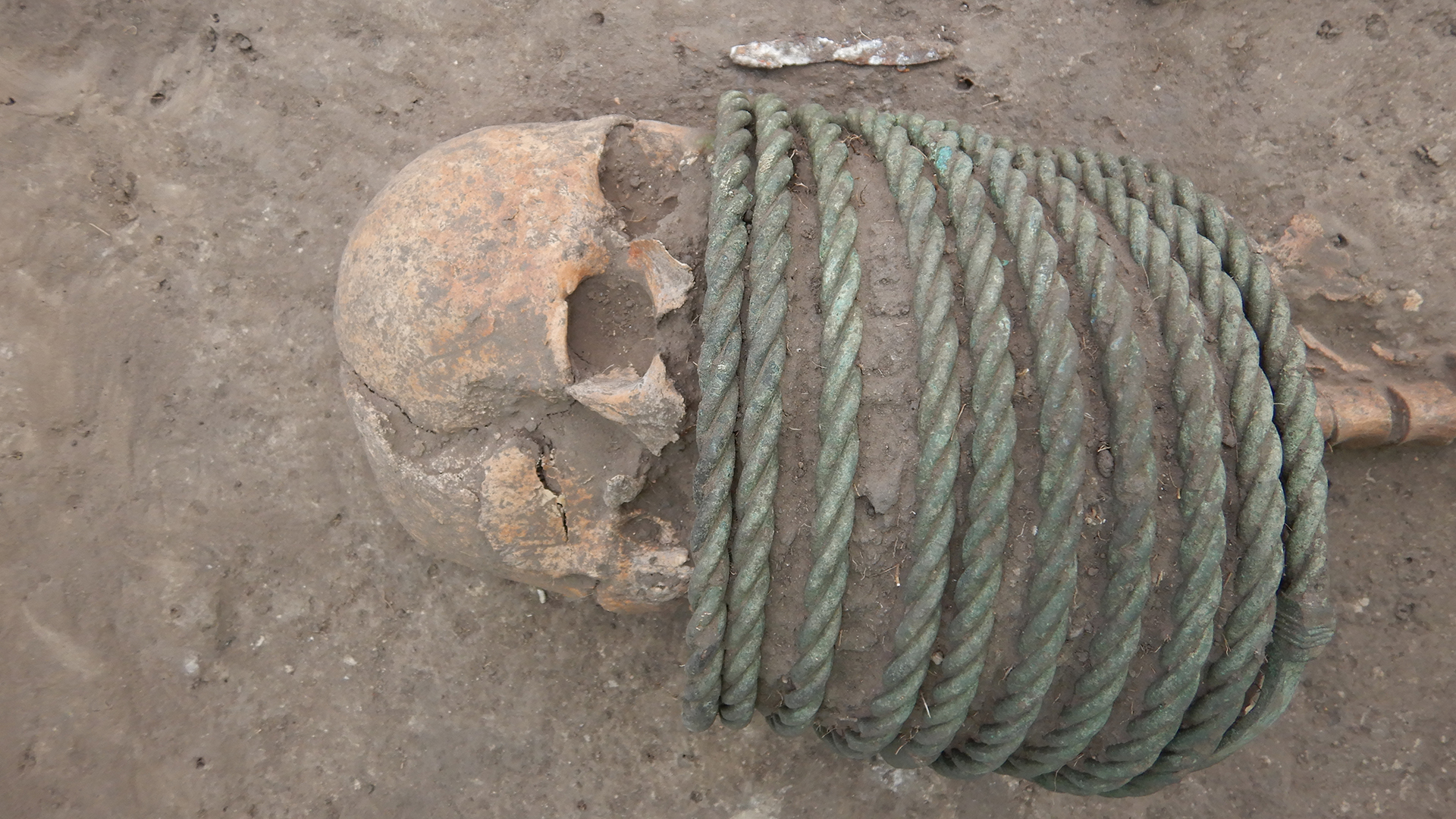The remains of women buried with thick twisted bronze neck rings have been discovered in an 11th century cemetery near the village of Ostriv south of Kyiv, Ukraine.
The 11th-century cemetery is located about 50 miles (80 kilometers) south of Kyiv. Of its 107 graves, “most of the identified burials were deposed in wooden coffins,” Vsevolod Ivakin and Vyacheslav Baranov, both archaeologists at the National Academy of Sciences of Ukraine, wrote in a paper they presented at the annual meeting of the Archaeological Institute of America, which was held Jan. 4-7 in Chicago.
The cemetery’s dead include both men and women. Some of the men were buried with weapons, such as axes, spearheads and swords, Ivakin and Baranov wrote. A few of the women were buried with elaborate neck rings, which “are found only on necks in female burials and were apparently a kind of social marker,” in this region at the time, Baranov told Live Science in an email.
An expedition by the Institute of Archaeology of Ukraine discovered the Ostriv graveyard in 2017. Between 2017 and 2022, excavations unearthed the 107 inhumation burials dating from the late 10th and 11th centuries. The unique nature of the graves was quickly apparent. Unlike the unusual funerary practices in the Kyivan Rus during this period, the graves were oriented south and west instead of north.


Excavations at Ostriv (and everywhere else in Ukraine) are on pause for now due to the Russian invasion.
* This article was originally published here










No comments:
Post a Comment